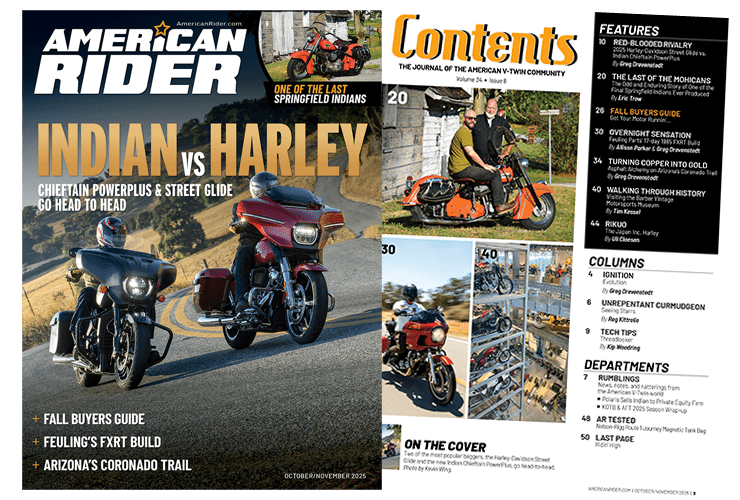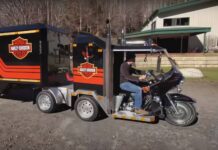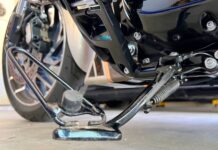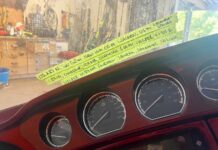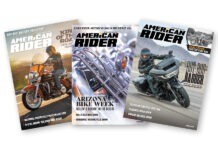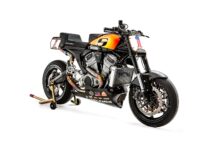Describing how a motorcycle functions and performs is fairly easy. An engine feels torquey or peaky; a suspension or seat is plush or firm while rolling down the road. But describing the experience of what it’s like to ride a motorcycle is far more nuanced because of the various human emotions we feel in the saddle.
Freedom! That’s the most common feeling conjured up to describe motorcycle riding.
“The motorcycle represents freedom above all else,” famed musician Lyle Lovett said to podcaster David Goldman. “It’s a freedom of movement, freedom of exhilaration. It’s just the freedom of being able to have fun when you want to. The physical reality of a motorcycle is that it represents freedom.”
Related: Rubber-Side Down – Around The Corner
But freedom is easy to say mostly because it’s terribly vague. One rider’s freedom can be drastically different from another’s. Freedom is defined by Merriam-Webster as the quality or state of being free:
- The absence of necessity, coercion, or constraint in choice or action
- Liberation from slavery or from the power of another
- The quality or state of being exempt or released, usually from something onerous
A lack of constraint resonates with riders, as does the state of being released, but there are a lot of words in the definition that don’t – or barely – apply to the emotions we feel when riding a motorcycle.
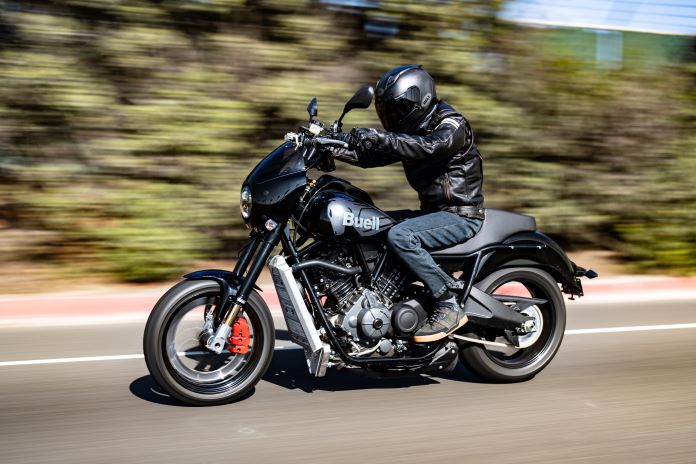
Perhaps Robert Pirsig was most eloquent when philosophizing about riding motorcycles in his seminal book, Zen and the Art of Motorcycle Maintenance, An Inquiry Into Values, of which more than 5 million have been sold since it was published in 1974. The book stemmed from a cross-country motorcycle trip Pirsig took with his 11-year-old son on a 1966 Honda Super Hawk, and it’s an exploration into how quality is synonymous with truth and how rationality and romanticism coexist.
“In a car,” Pirsig wrote, “you’re always in a compartment, and because you’re used to it, you don’t realize that through that car window, everything you see is just more TV. You’re a passive observer, and it is all moving by you boringly in a frame.
“On a cycle,” he continued, “the frame is gone. You’re completely in contact with it all. You’re in the scene, not just watching it anymore, and the sense of presence is overwhelming.”
A simpler description of what motorcycle riding means to us came from Patrick Garvin from J&P Cycle, who said: “A motorcycle is quite literally a vehicle to adventure. That’s what it’s about.”
Explore American Rider‘s latest digital edition!
Ah, yes, our bikes are our tickets to adventure!
Motorcycle adventures come in many forms, ranging from multi-thousand-mile excursions to a jaunt dodging two-ton cages across town. Riding a motorcycle requires commitment – wearing protective gear, braving inclement weather, and avoiding automobile drivers who pay more attention to their phones than they do motorbikes. Riding is always an adventure.
“Every time I step across a motorcycle and sit in the saddle and twist the throttle,” Grammy-winning Lovett continued, “my first thought is always why I haven’t done this more often. Every time I ride makes me want to ride again.
“It’s the motorcycle,” he summed up. “The idea of the motorcycle and the physical.”
Find more Rubber-Side Down columns here

